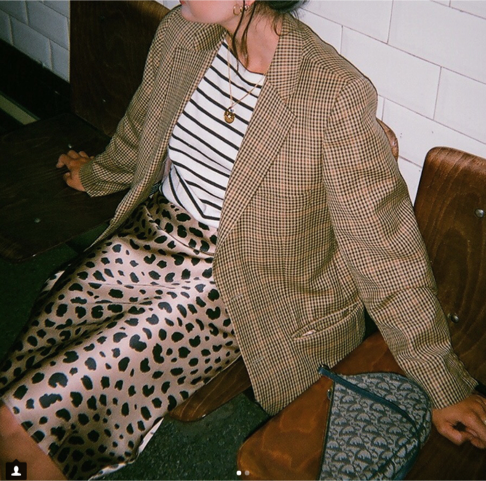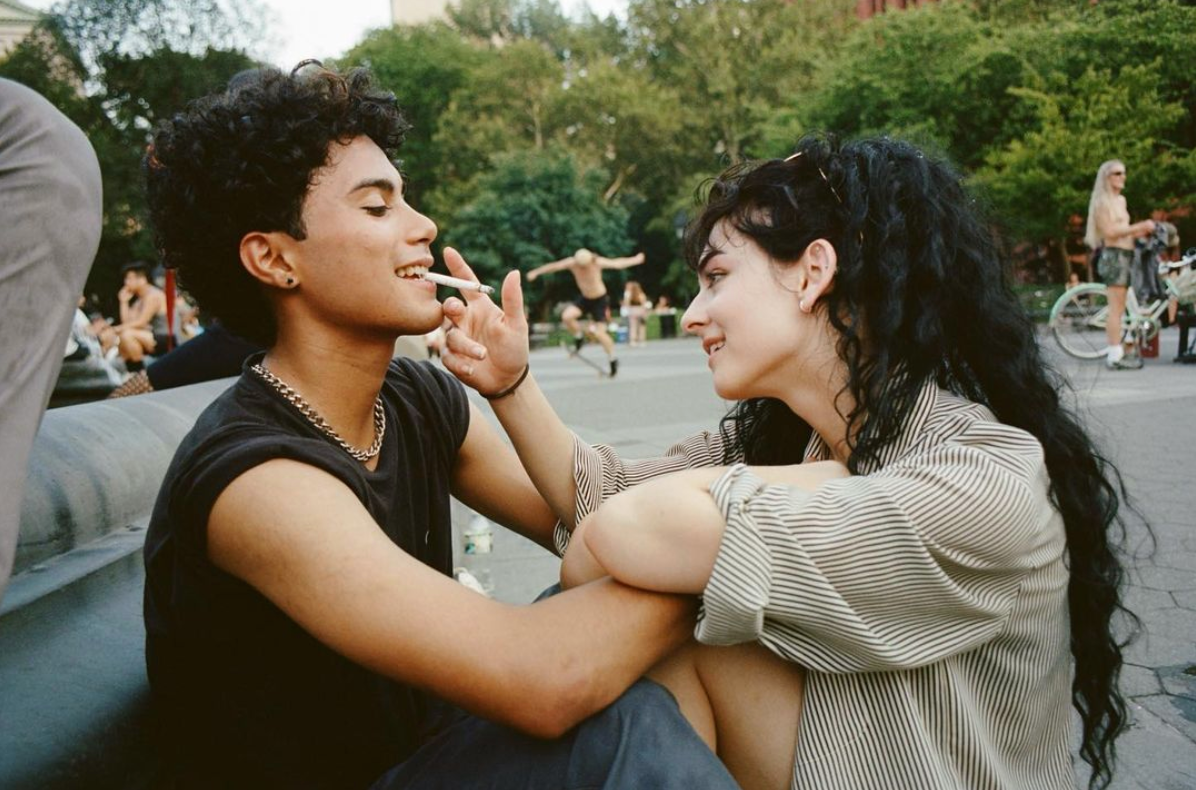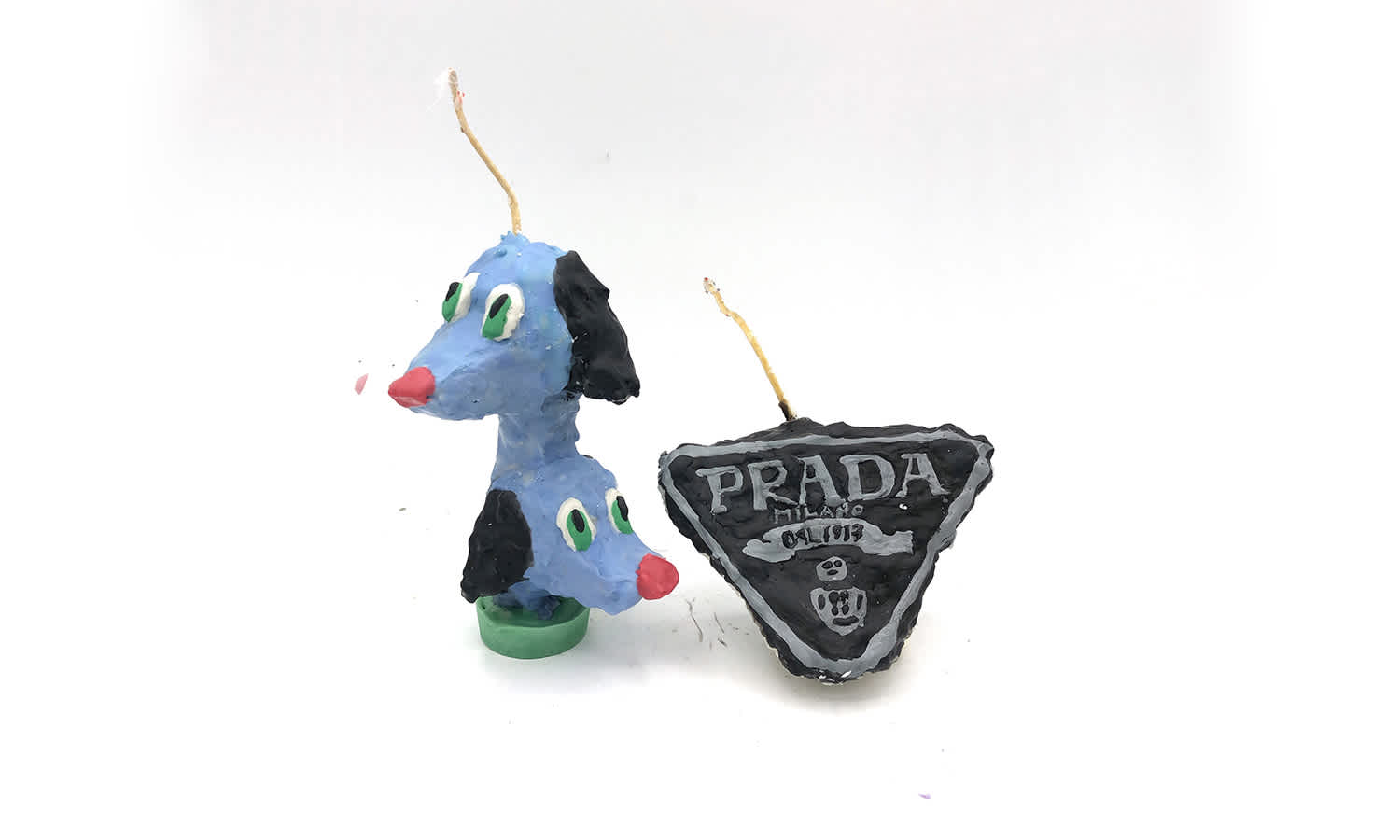
It all started with her Tyler McGillivary bag.
A name I had bouncing around my head the whole car ride home. My fingers manically dancing across the instagram keyboard in bolts of energy hitting each key as I searched for her account.
When I finally found Tyler McGillivary, I felt like I had stumbled across a brand so entwined with self-expression and artistry that investing in one of her pieces also meant investing in oneself.
Not to be dramatic, but the way Carrie Bradshaw felt about the Manolo Blahniks is the way I feel about finding the perfect tote bag. A tote bag can be the center of your universe, the home that hides all my miscellaneous goods: A camera. The world’s smallest paint set. One unfinished Martinelli’s apple juice. These essential staples of my humanness, the miniature caricatures of my soul.
So when I saw Tyler McGillivary’s wiggle tote bag draped on the girl I had just gone on a date with, I had to know more about the designer behind the bag that hit me with cupid’s ironic bow.
The idea behind inbtwn. is how our identities are always kind of in flux, and we can't really be identified by one specific thing. I feel that way about your clothes, and I'm interested to kind of hear what you feel about identity. When did you start to link clothes and fashion with identity?
Tyler: I studied it in school. I went to NYU Gallatin, which is a school where you make your own major and get to sort of tailor your studies. My study was specifically based around gender identity - specifically female identity or female identifying identity. Over time clothing has been both a way for women to have enhanced freedoms and a way to force women to be or act or seem a certain way to society. I was interested in that dynamic of [fashion] simultaneously allowing you freedom while also kind of constructing identity. I was thinking about all the ways that that can be positive and negative.
Now, I feel like my focus is more around this physical world that I want to make. I am obsessed with color, and I keep thinking of the Dua Lipa album, “Future Nostalgia”. I love this feeling of like you want to be ahead of the curve but also referencing the past in this interesting way. I just want people to be able to be their most outlandish, wonderful, bright, shining versions of themselves. I think that color and print and wild textiles are, in my opinion, how I've always done that.

When you were a kid, did you find that clothing was a way that you expressed yourself?
Tyler: Clothing wasn't as much my outlet for that as drawing was. When I grew up, I was really interested in art and drawing and painting. I put all my time into that. As a kid who loved creativity in a school that was very homogeneous, I felt like crafting was kind of like a dream escape.
There's a feeling I get when — I think a lot of us get — when you go into an art store, where it feels like there's just so much potential. There’s a million paint colors and blank paper. There's a feeling of “what am I going to make?”
When I started using clothing as an outlet for that creativity, it was because it was connected to that same idea of color and that basic feeling of “there's so much potential in those raw elements of design.”
I am interested to know, in this last year when we're not really going outside or dressing for anybody really, what getting dressed was like. What did you learn about yourself and your personal style and what you want to do with your brand?
Tyler: I feel like I have two very specific styles. One of them is that I look for the most rare items I can possibly find that align with my specific design practice. I love looking at vintage clothes and finding independent designers because I love that feeling of wearing something that’s truly one of a kind. I love dressing up, wearing like the sparkliest top to nothing. I feel like that's such a core element of both my design practice and personal style.
But then there's the other side of my style, which is that I hate getting dressed up to go to work. So, my other style is kind of like a 12-year old boy if you added neon colors into it. It’s very much a hugely oversized t-shirt, white pants or jeans, Dansko hot pink shoes, and a hoodie. I want to be as comfortable as possible. But I never don't wear color because otherwise I don't feel like myself.
I feel like those two competing ideas are the core of my brand. There are pieces that I sell that are fancier — that are way more rare, one of a kind — especially with the designers that I sell that aren't even my own brand. Then, we also have the more kind of toned down [pieces], like a sweatshirt. Those two things are really important because, for me, I have to have both in my closet. I also know that there's a time and a place for those things to both interact.
I love the Noush top by Anoushka Haroutounia that came out today. It’s fantastic. I want to wear it to nothing and everything. How do you find brands that you want to sell on your site?
Tyler: I bring brands on the site in the same exact way that I shop in a vintage store. Basically, if I haven't seen something like it before, then I want it on the site. I need to have a sort of feeling that I want to buy it. I think, at the end of the day, my dream for the shop is that the pieces connect — because I do feel like there's a very specific world — but mostly that when my customer sees it, they get a “I can't get this anywhere else. I need to have it because I'm not gonna get it again” kind of feeling like you get with vintage clothes.

Yeah, absolutely. As a fellow person that lives in New York City, where do you find pieces like that? Where would you shop if you're going to get something for someone and where would you go for yourself?
Tyler: Great question. My favorite store — I would say the best vintage store in New York — is Malin Landaeus. I now source vintage pieces from there for inspiration, but before that I was just a truly loyal customer, maybe too loyal some could say. They have just an absolutely amazing eye and the best shoe collection I've ever seen in my life.
For gifts, I feel like Coming Soon is obviously beautiful. Bi-Rite, I love. They have such a unique vision for furniture. For a friend, I do really think Café Forgot has a really good, specific idea going on, and I love that they support independent designers.
I'm excited to go when I'm back in New York. So, who would you say your customer is? From what I’ve experienced on your site, Tyler McGillivary is not a gendered brand, so to speak.
Tyler: Yeah, that’s interesting. I was meeting with this showroom that I’d asked for feedback from, and they were kind of like, “You have to stop making things that are so masculine.” I was kind of like, “I can't,” because I have a strong community of followers who either don't subscribe to any sort of gender identity or identify as being a man or are a woman who likes to dress in more masculine leaning clothing. Personally, like I mentioned about my two sides of my style, one side of my style is a lot more traditionally masculine feeling. I love an oversized collared shirt. I love a pant that doesn't feel way too tight on you. I am interested in that kind of integration of those two different styles.
I will say, I think that my customer is primarily in their 20s and 30s. It's a lot of people that are interested in design or creativity in general. You have to be interested in color, at the very least, to be interested in the brand. I have an overwhelmingly supportive community of people that are just very uplifting of one another. I don't know why that is necessarily, maybe because people that love rainbows tend to be nice. I don't know if that's necessarily a scientific fact, but that's my working theory.
No, that's a scientific fact. The research paper, we'll pull it up and link it in the article. How do you want people to feel the first time they put on your clothes?
Tyler: I want them to feel really good about themselves. I want people to feel hot and sexy and good and confident in the clothing. I'm not really interested in people feeling cool, but I want people to really feel like their best versions of themselves in the sense of like, “Oh, I feel like I’m glowing. I feel like there's a light shining on me.”

Can you talk more about the ultimatum that you gave yourself before your college graduation surrounding your popular flower top? When you were designing the top, what were the emotions surrounding that experience?
Tyler: It was ultimately a stepping stone. I drew this top and these pants on a flower. I was just sort of thinking about what to wear for graduation. My friend's grandmother had given her a sewing machine, and she was like, “I will literally never use this. Do you want it?” I was like, “Okay, I will definitely try to use it, but I don't know how to use it.”
I made the top, and it wasn't that well fitting because it was the first thing I ever made, but it definitely did the job. After that I was just sort of like, “Okay, I have to keep doing this.” That feeling of drawing something and then bringing it into the world and then being able to wear it was so thrilling. I was like, “This is all I want to do now.”
I'm curious to know this idea of, and you said it in your first answer, creating your own world. If you could create a perfect kind of fashion landscape, what would that look like?
Tyler: By fashion landscape, do you mean in sort of like a dreamscape, or do you mean more like a reality of where I want fashion to be going?
Let's do both. Let's start with dreams first because it's whimsical.
Tyler: I guess the world that I want to create is really full of color and textures and shapes and forms that you have never seen before. I feel like my studio is on its way to being that. I'm really interested in the dynamic between natural elements and hyper-manmade things. I have so many plants in my life, but I also have a side of me that's so interested in these materials and pieces that are so not natural. I think having a mix of these sort of otherworldly creations mixed with sort of the most beautiful natural elements you could imagine is sort of my ideal combination. It would be like a greenhouse full of bizarre furniture is the best way to put it.
I think in terms of fashion, specifically, I really want to have a store. Hopefully I can make that happen in the next like five years. My dream would be to just work with all the artists and designers that I'm friends with and whose work I absolutely love and admire. I want to keep expanding that community.
For my own brand, I hope to drive focus a lot more on making one-of-a-kind things and using recycled textiles and making things that are even more art pieces. I've been so focused on production and growing as a brand — which I love doing and want to continue doing for sure — but like the first thing that I made, I got into doing this because I love having things that are truly their own. So, I hope to be able to return to the roots of that at some point.
I also hope people continue to shop small and will continue to support designers in the way that I feel like they are now. It seems like everyone's kind of moving away from the fashion calendar and releasing smaller drops that are more true to themselves. I hope that continues.

I think it’s great that we're moving towards that kind of level of sustainability and uniqueness of work.
Tyler: Definitely. I think people really respond to it. Like, at the end of the day, that’s what it seems like people really do want.
What have you learned from the community of designers and artists that you surround yourself with?
Tyler: I think the biggest thing is that there is no value to creating pieces that are not authentic to who you are. I've talked to so many of my designer friends about the difference between doing wholesale and e-commerce. I've had so many people say wholesale is just going to be so soul sucking. You would be paying so much money to have a showroom, show your collection, and then have to face the sort of overwhelming rejection of stores not being interested in what you've spent the past six months making. I've had that experience.
I think what I've learned and can hopefully pass on from that experience as well, is the importance of being true to your own vision and then figuring out how to get that vision across to your own community. My brain has grown so much since I started doing that, versus when I was trying to make things that appealed to a more minimalist version of my ideas.
I get so much inspiration and confidence from watching my friends make work that is so unique and so true to them. They're like, “This is what I'm making. This is my art, and I'm not gonna compromise that.” And I think that that has been invaluable to me.

Absolutely. I mean, I feel like it must be also really inspiring to be around people that are consistently trying to be truer and more authentic to themselves as well. How would you describe yourself?
Tyler: I think that I would describe myself as someone who seeks out beauty and fun, and also someone who's very disorganized. Ultimately, it works for me creatively but doesn't work for me business-wise sometimes. I think that overall, I am trying to convey the way that I see the world and what I want to get out of it to other people and hope that they resonate with that idea.
I was talking today with my partner about what we want to get out of life. I feel like, for me, I want life to be as beautiful and joyful as it possibly can be, which I hope I can convey through my clothes. Whether it be going to buy flowers or going to the Natural History Museum on a rainy day, I feel like those things are so important to me and make my life so valuable.
Is there anything that I haven't asked you that you think that the inbtwn. audience should know?
Tyler: I’d love to shout out some designers. Here are their names: Zoe Schlacter (@zoeschlacter), Marshall Columbia (@marshall.columbia), Brooke Callahan (@brooketcallahan), Un_Concept (@un__concept), Sam Crow (@samcrowrugs), Noush (@noush.h), Blobb (@_blobb), Arielle Bobb Willis (@ariellebobbwillis), Rachel Witus (@rachelwitus).
You can see more of Tyler McGillivary's work on Instagram (@tylermcgillivary) or at www.tylermcgillivary.com.


